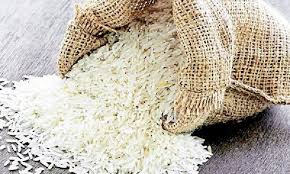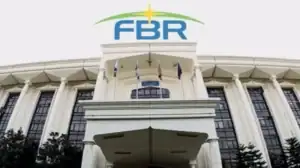Islamabad, Apr 22, 2025: Despite global market volatility and fierce competition, Pakistan’s rice industry has emerged as a surprising success, defying expectations of a downturn after India lifted its rice export restrictions in September 2024.
Experts in rice export and commodity analysis revealed that Pakistan’s rice sector has skillfully transformed a potential setback into an opportunity.
By prioritizing product quality and innovation instead of engaging in price wars, it has established a strong, sustainable position in the global market.
Experts are optimistic that by the close of FY2024-25, exports will exceed the previous year’s total of 773,000 tonnes.
Agricultural trade analyst Hamid Malik attributes this impressive growth to Pakistan’s resilient exporters and their strategic focus on quality, with exports rising by 21.78% during the first nine months (July 2024-March 2025) of FY25.
Malik commented, “This is not just a triumph for exporters, but a model for how developing nations can leverage their strengths amidst market turbulence.”
In mid-2023, global rice markets experienced upheaval when India, the world’s largest rice exporter, imposed a ban on non-basmati rice exports to control domestic prices.
This disruption created a supply gap, driving international prices to historic highs—over $600 per tonne for non-basmati rice and $1,200 for basmati.
Pakistan quickly filled this void, boosting its exports. However, analysts had predicted that once India’s domestic production rebounded following a strong monsoon, the ban would be lifted, threatening Pakistan’s gains.
In September 2024, India not only resumed rice exports but also removed its Minimum Export Price (MEP) ceiling, allowing traders to set their own prices.
“Many expected Pakistan’s rice exports to falter,” said Malik. “Indian media even predicted a halt in Pakistan’s trade, but the actual outcome has been quite the opposite.”
Instead of competing on price, Pakistan’s exporters focused on enhancing quality, especially for basmati rice. This strategic shift has proven successful.
By March 2025, Pakistan controlled 67% of the basmati brown rice market in the EU and UK—regions known for their stringent quality standards—compared to India’s 33%, despite Pakistani rice being priced at a premium of $100 per tonne.
Read More: Pakistan Rice Exports Surge 19%, Set to Reach $4.5bn in FY25
“Consumers in these premium markets value consistency and superior fragrance. Pakistan’s commitment to meeting these demands has earned their trust,” explained Malik.
In contrast, non-basmati rice exports faced greater challenges. Domestic production shortages limited supply, and reducing prices risked harming farmers’ profits.
Nevertheless, Pakistan still managed to export 663,000 tonnes from July 2024 to March 2025, marking an increase of 118,577 tonnes from the previous year.
Malik attributes this to effective supply chain management and exporters’ ability to target specialized markets.
Currency performance has also worked in Pakistan’s favor. While the Indian rupee depreciated by 3% during the season, Pakistan’s currency stability helped its exporters avoid significant price reductions.
In markets such as the UAE and Iran, Pakistani basmati now commands a premium of $130-$210 per tonne over competitors.
Even in price-sensitive regions, consumers are increasingly opting for Pakistani rice.
“It’s no longer just about cost. Global buyers now associate Pakistani rice with reliability, fostering long-term partnerships,” said Malik. With three months left in the fiscal year, Pakistan is on track to exceed last year’s basmati export record.
“The sector has proven its ability to adapt. If Pakistan continues to invest in quality upgrades and farmer support, it could permanently shift from being a secondary supplier to a global market leader,” said Arif Ali, a rice exporter.
Ali also stressed the importance of government support to maintain this growth. “Subsidies for sustainable farming practices and investment in research and development for high-yield crops are vital.
The global market is watching closely.
This is Pakistan’s opportunity to cement its place as a key player,” he added. European importers have taken notice.
“Last year, many rice importers switched to Pakistani basmati, and the feedback has been overwhelmingly positive,” said Ali Rehman, a rice exporter in the UAE and EU. However, challenges remain.
India’s vast production capacity means it could flood the market if prices fall, and climate change presents a long-term risk to Pakistan’s rice production.
“A bad monsoon or a spike in global stockpiles could disrupt the market. Diversifying export markets and strengthening climate resilience are essential,” Malik warned.









